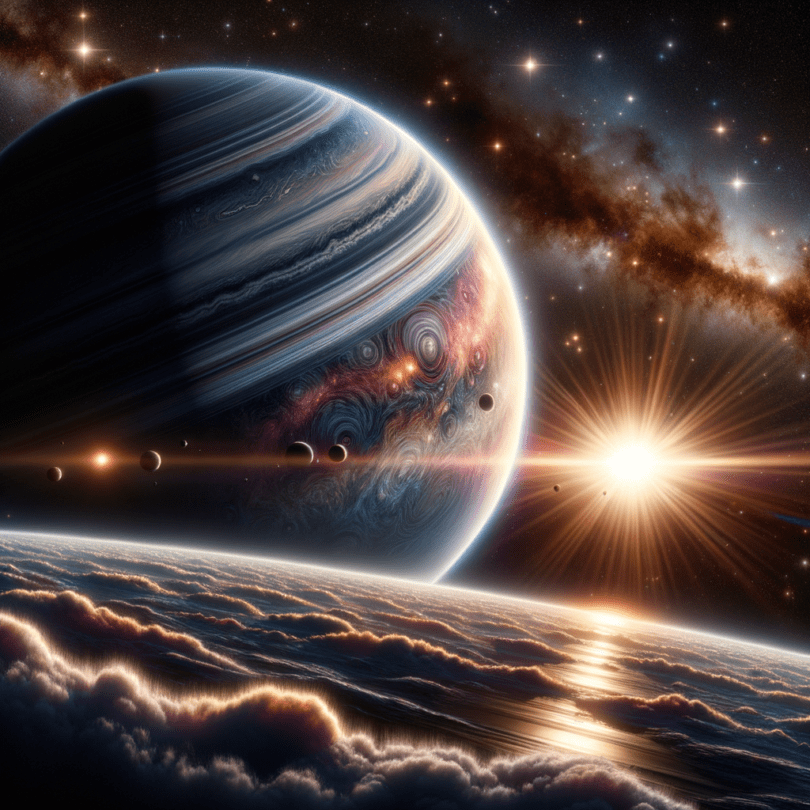Oh boy, I can vividly recall the moment I first stumbled upon the concept of exoplanets. Imagine that, planets beyond our own – perhaps bustling with life or sheltering mysterious wonders – the idea was absolutely mind-blowing. It’s like they were these distant celestial neighbors sharing little cosmic tales, teasing the imagination of starry-eyed dreamers like me. So come on, let’s embark on this enthralling journey together, shall we?
The Dawn of Discovery
I gotta say, before exoplanets, the universe felt a bit like an empty house party. Sure, we had our crew of planets – initially nine, but eh, Pluto had a rough time – anyway, that was it. But oh man, the game changer came in 1992, when we first learned of these planets casually chilling around far-off stars. Suddenly, the universe felt like a bustling neighborhood. Astronomers couldn’t help but marvel at how much bigger our celestial playground became!
The wildest part? You’d think they found these sneaky planets using super-telescopes zeroing in on the action, right? Nope! They’re like cosmic sleuths using clever tricks to catch the faintest of clues – shifts in starlight or star wobbles. It’s like figuring out who ate the last cookie by breadcrumbs alone!
Tantalizing Techniques
Honestly, hunting for planets zillions of miles away isn’t like collecting seashells by the seashore. Yet, somehow, astronomers have puzzled out some mind-blowing, almost magician-like methods. Heard of the “Transit Method”? It’s like finding brilliance in simplicity. Basically, they watch for tiny dips in a star’s glow when a planet saunters across. Picture spotting a fly zooming past a flashlight – tiny but catchable, thanks to these gifted stargazers!
Then there’s the “Radial Velocity Method.” Sounds all futuristic, right? But it’s really quite ingenious – catching the subtle wiggle of a star as a planet’s gravity gives it a gentle nudge. Picture a clumsy dance duo, where the planet’s a butter-fingered ballroom partner dragging its luckless star partner all over. Adorable, right?
What We’ve Found So Far
The astonishing variety of exoplanets is something else entirely! Just when you think you’ve nailed it with gas behemoths like Jupiter or Earth-like rocks, along comes a twist – “Super-Earths” or “Hot Jupiters!” Honestly, naming them feels like crafting an interstellar Pokémon collection – gotta catch ’em all!
And get this, there are even “Ocean Worlds” – yep, all water – makes my sci-fi loving heart dream of underwater cities and tentacled mysteries. It’s like our universe is serving up wild meteoric notions that keep us all guessing, a puzzle left by some cosmic trickster begging us to solve it.
Are We Alone?
Sigh, the age-old question: are we truly alone in this vast universe? With so many exoplanets cataloged, it’s hard not to feel a sliver of hope. It’s like with every new discovery, each exoplanet swings by with a cosmic invite saying, “hey, maybe aliens are out here!”
Picture this: little green aliens, sentient gas clouds, or even simple, basking life forms on planets light-years away. Or maybe something that defies our earthly understanding entirely, shaped by truly bizarre environments. It’s not just a hunt for ET, it’s about rethinking life’s potential on these distant shores.
Challenges and Hopes
And despite all this dreamy excitement, let’s face it, we’ve got beastly challenges. Light years stretch on like never-ending highways, and our best ships can barely make the journey without feeling like they’ve gone the wrong way on a roundabout. Gotta admit, it’s a little like watching a snail attempting a marathon—it’s slow going but mesmerizing in its own weird way.
Each mission, each new gizmo nudges us closer—creepingly so, like a kid on a cosmic road trip, perpetually whining “are we there yet?” Patience, patience, patience – it’s a stargazer’s true way!
Concluding Thoughts
Wrapping this up, what’s truly captivating about chasing exoplanets isn’t solely about the unknown out there—it’s the unyielding curiosity that drives us. That insatiable hunger to understand, to expand our dreams bigger than the cosmos. It’s a testament to our relentless wonder and the spirit of exploration. It’s about these cosmic secrets—the whispers of the universe we’re gradually piecing together.
So, next time you’re stargazing, pondering those far-off twinkling points, just picture which might host a world where otherworldly beings do ze same – contemplate the universe while staring right back at us. Each star a story unfolding, and us, barely scratching the preface of our cosmic narrative.

